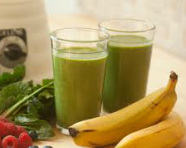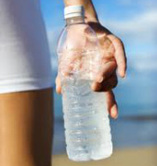By Dina Griffin, Sport Dietitian for Fuel4mance

mix1 Nutrition Tip - Summer 12
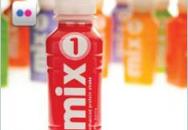
Fruit Smoothies
Fresh fruit and fruit smoothies are super options to hydrate and get vitamins and antioxidants runners need on a daily basis. If you tend to eat the same types of fruits, get out of your rut and try a new fruit or one you haven't tried in a while. Cherries, peaches, blueberries, blackberries, strawberries, and cantaloupe are great choices. There's even locally grown rhubarb (yes, there is more you can do with rhubarb than make pie!). There are endless options for fruit smoothies. The basics of a smoothie are fruit(s), fluid(s) such as milk, water/ice, and a protein source such as a protein powder or yogurt. You can optionally toss in a fat source such as flaxmeal or nut butter. Experiment and don't worry about exact amounts. A mix1 Protein Shake is also an excellent and convenient way to supply your body with these same kind of nutrients. You can check out the ingredients here |
mix1 Nutrition Tip - Spring Week 7
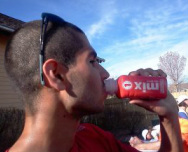
Practice Race Nutrition
We're getting to the final few weeks of preparation for the BolderBoulder. Practicing your race day nutrition is one of the essentials of training and luckily, it's not too late! For those of you who raced the Dick's Sporting Goods Flatout 5K last weekend, think about what you ate and drank the day before the race and the morning prior to the race start. The golden rule of "don't try anything new" still stands. If you experienced any stomach issues during the race, go back to your log and examine what you consumed in the previous 24 hours. Common culprits of stomach issues during racing are starting the race dehydrated or eating too much fat, fiber, and carbohydrates prior to the race. A mix1 shake as part of your pre-race breakfast is a great way to help you fuel up before you race. Try it out before your workouts so you know it will work on race day. Send nutrition questions to [email protected]. |
mix1 Nutrition Tip - Spring Week 4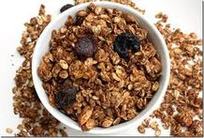
Homemade breakfast recipes
This week, we present a few ideas for homemade concoctions that are nutritious yet still simple and easy. Don’t worry that the amounts aren’t listed in these recipes - be creative and experiment to find the consistency and combination you like. Low-sugar high protein granola: Many of the store-bought granolas are loaded with excessive sugar and contain inadequate protein. The walnuts, chia seeds, and flaxmeal boost the omega-3 content of this granola and provide an excellent source of fiber and plant protein.
|
Preheat oven to 325 degrees. Mix all dry ingredients except for the dried fruit and coconut in a large bowl. Mix water and small amount of the sweetener and oil of choice in a separate bowl. You can heat the liquids in a pan or microwave for easier blending. Add the liquid combination to the dry ingredients and stir to coat. Spread ingredients on a baking sheet covered in parchment paper or cooking spray. Bake for 30 minutes or until golden brown. Stir every 10-15 minutes. Remove from the oven, let cool, and then add the dried fruit and coconut flakes.
Not your grandma’s flapjacks: Yep, this is different but have no fear. This recipe makes for a higher protein pancake that will surprise you!
|
mix1 Nutrition Tip - Spring Week 3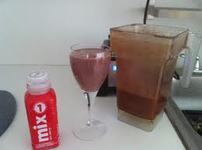
Pre-run fueling ideas:
Where we are now in the training season is an opportune time to test different nutrition strategies to see what food(s) work best to fuel you for your training runs, and to learn what will work best for your race day. For fueling prior to a morning or late afternoon run, I typically recommend a light meal containing a moderate amount of carbohydrate that includes a small amount of protein. Whether to include fat can depend on the type and duration of your planned run (fat slows digestion time). Liquids can be more quickly digested and more easily tolerated than solid foods. Some ideas to consider: - homemade smoothie made with blueberries, protein powder, and milk or water. Add flaxmeal, wheat germ, or a spoon of nut butter to provide some fat. - hard-boiled egg with banana - greek yogurt with strawberries - steel cut oats with chopped walnuts and cinnamon - Mix1® shake - applesauce with peanut butter mixed in - turkey slices rolled in tortilla Experiment and take note of what and when you eat, and how you feel during your run so that you can adapt as needed or discuss your nutrition issues with your coach or myself. |
mix1 Nutrition Tip - Spring Week 2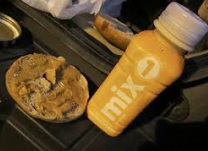
Pre-run breakfast: If & When
Many runners ask me if and when they should eat before doing a run. My answer depends on the type and quality of the run, its duration, and what the individual's goals are. If the run is a quality training session (such as hills or speed intervals) or a long run, it typically is a good idea to eat a light snack 30-60 minutes prior. If the run is shorter and/or easier (aerobic), it is not necessary to eat prior. You can time your runs to occur in between meals so that you do not consume extra calories you may not need. This can be particularly effective for those desiring weight loss. Next week, I'll provide some quick and simple ideas for pre-run fueling.Question? send to [email protected]. |
mix1 Nutrition Tip - Spring Week 1

The Role of Nutrition in Training
As you ease into the 2012 BOLDRUNNING Spring Training Program, start thinking about your nutrition habits. Do you know if they are supportive of optimal health and your training goals? You might be surprised to learn how much of a role nutrition can play in how you feel during your every day and during your workouts. We’ll be exploring this more in our weekly nutrition tips. If you have a nutrition question you would like to have addressed in this public forum, please send to [email protected]. |
mix1 Nutrition Tip - Week 19
Taking Downtime
BoldRunners, I have enjoyed providing you nutrition tips along the way this year and hope you have found them valuable. I’ll be taking a break from posting these tips as most of you finish up your racing season and enter “maintenance” mode for a while. What “downtime” means for me, and what I recommend to all of you, is to still keep nutrition “in check” as you go through the holidays and have less structured training time. This doesn’t mean I expect everyone to avoid sweets, alcohol, or Grandma’s fruitcake (unless you need an excuse to not eat the fruitcake, then please do use me as the excuse). It is a great time of the year to have some fun with food: try new foods, new recipes, and prepare different meals with family and friends. Think about your training and health goals for next year. I’m certain nutrition plays an important part of these goals; you may just not be aware of the difference nutrition can have. And even if you aren’t ready to undertake any behavior changes right now, the fact that you have identified goals is one step in the process.For those of you who still have some races coming up (Big Sur’ers!), then stay focused and remember to practice your nutrition and hydration plan prior to race day. For the rest of you who are done racing but are continuing with BoldRunning for maintenance and fun, remember to have some fun with food too. A healthy relationship with food is a healthy way of living. See you out there on the trails! [email protected] |
mix1 Nutrition Tip - Week 18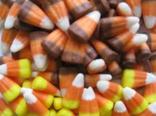
Weight maintenance (or loss) as we move into the holidays...
You’ve probably seen the Halloween candy by now in the stores. Maybe you’ve purchased some because you want to get stocked up before your favorite candy is gone. Or maybe your office or work environment has extra candy in the breakroom “calling your name” as one of my recent athletes claimed. We all know that foods do not speak to us. It is your mind you are letting convince you that you need the candy. I am often asked “is that bad” for making a choice to have candy (or some other similar food). The answer is often not black and white, but generally I will often respond “No, that is not bad, but is it the decision you wanted to make?”This time of the year can be very difficult for athletes who struggle to maintain weight or for those who desire weight loss. There are many social gatherings and celebrations where food and drink are a focal point. If you decide you are ready and you want to achieve weight loss or perhaps figure out other strategies to more easily maintain weight, then know that this will be a challenging time of the year but it can be done with motivation and a willingness to make behavior changes. If you decide to pursue this type of goal, make sure you have a good support system in place to help you along the way. There often are many bumps in the road to achieve weight loss, but the real key is how you also will maintain that weight loss for the long-term. Think about your goals and know that I can be a part of your positive support system should you decide you want assistance from a sports dietitian! E-mail me at [email protected] to learn more. |
mix1 Nutrition Tip - Week 17
Post Race Analysis.
Congratulations to all the BoldRunners who raced this past weekend. I have heard many success stories of personal best times, first timers who crossed the half marathon and marathon finish lines, and of course, some great nutrition successes too! If your race didn’t go as well as you had planned due to some stomach upset, bonking, or “lack of a nutrition plan”, then make notes of what you did (or didn’t do). Consider contacting me for an individual consultation, especially if you have another race coming up in the next month or two. There is still time to do what I call “trial and correction” to fine tune nutrition. For those of you who are done with races, but will remain on the BoldRunning team for fitness and for fun, the holidays will soon be approaching. With this time of the year comes the start of a lot of weight cycling. I will be providing some strategies for dealing with some of the common challenges as the seasons change in upcoming tips. In the meantime, I welcome any nutrition-related questions from the group and will post them anonymously. Send questions to [email protected]. |
mix1 Nutrition Tip - Week 16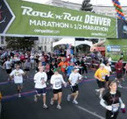
--provided by Dina Griffin, Sport Dietitian for Fuel4mance--
Nutrition leading up to Denver Rock and Roll Half Marathon
|
mix1 Nutrition Tip - Week 15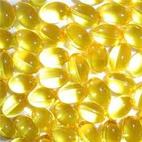
--provided by Dina Griffin, Sport Dietitian for Fuel4mance--
Vitamin D - part 2 Last week I wrote about the role of vitamin D and risk factors for deficiency. Also mentioned was that more research is needed to determine the effects of low vitamin D in athletes upon training and performance. It is known that some athletes who have complained of ongoing muscle pain and weakness (or “heaviness in the legs”) have been found to be deficient in vitamin D and that symptoms have disappeared with appropriate supplementation. Ideally, we want to have our levels checked a few times per year, particularly if training in the winter months when the body’s vitamin D synthesis slows due to inadequate exposure to UVB rays. The current consensus for severe deficiency is a value lower than 20 ng/mL. Most physicians want to see a value between 40 and 100 ng/ml based on the research available to date. If you check your recent lab value and find it to be low or even if you feel like you have had a few of the aforementioned symptoms, it is wise to first check with your doctor or sports dietitian before you start supplementation. There are different forms of vitamin D, different supplement protocols, and other factors to consider before a professional medical decision can be made. And by the way, dietary sources of vitamin D probably aren’t going to cut it if you are in the severely deficient range. There’s much more to vitamin D, so e-mail me if you have concerns or questions. Happy running, BoldRunners! [email protected] |
mix1 Nutrition Tip - Week 14
--provided by Dina Griffin, Sport Dietitian for Fuel4mance--
Vitamin D - part 1 BoldRunners, next time you have your physical exam and blood workup, take note of your vitamin D level (often listed as ‘serum 25(OH)D’ on lab reports). Health experts agree there is now a high percentage of the population that is vitamin D deficient. The majority of our vitamin D synthesis comes from exposure to UVB rays so risk factors for deficiency include: infrequent or insufficient skin exposure to the sun, chronic sunscreen usage, and darker skin color. There are dietary sources of vitamin D such as fatty fish (salmon, tuna, sardines), cereals, egg yolks, and fortified foods such as milk, juice, yogurt, and some margarines.What does D do? Aside from playing a key role in bone health and calcium regulation, recent evidence suggests an important role for vitamin D with regard to immune system integrity, skeletal muscle function, and protecting against inflammation. As athletes, low vitamin D could affect our training and performance. Studies also suggest those with low vitamin D are at a higher risk of stress fractures and upper respiratory infections.We’ll cover more vitamin D details in next week’s tip. For now, think about whether you’ve had your D level checked and let me know if you have questions ([email protected]). |
mix1 Nutrition Tip - Week 13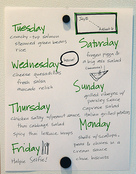
--provided by Dina Griffin, Sport Dietitian for Fuel4mance--
Plan. Prepare. Put it into practice. I work with many runners who desire weight loss. All of us have unique needs and challenges when it comes to making progress towards such a goal. But one challenge I see with almost all of my athletes who desire weight loss is the ability (and confidence) to plan ahead and prepare for consistent nutrition. Yes, we have busy lives and we must use our time wisely. However, those who take a few minutes each week to plan and think about what is needed for the week ahead are the most successful at implementing “the plan”. The way in which we get there may not be straightforward at first, but once we work out some kinks and strategize together, you can more easily put into practice the things you need to make progress. No excuses, BoldRunners. You just have to be ready to plan, prepare, and get things moving along. Contact me at [email protected] if you are feeling motivated to pursue weight loss or have questions my nutrition services. |
mix1 Nutrition Tip - Week 12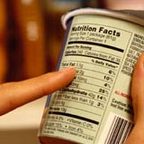
--provided by Dina Griffin, Sport Dietitian for Fuel4mance--
Nutrient ratios - who cares? Here’s a fun exercise for any of you who read food labels: take note of the total carbohydrate and protein amounts of the next packaged food or beverage you buy. If you have body weight (or body composition) goals and often purchase packaged foods, pick ones that have a close carbohydrate to protein ratio. One of the benefits to making this ratio closer is stabilization of blood sugar levels. The more you can minimize blood sugar spikes and crashes, the more your body can use its fat stores for energy. This has positive effects on our running performance as well -- the ability to run longer without needing to supplement with high sugar sport nutrition products as frequently! e-mail me at [email protected]. |
mix1 Nutrition Tip - Week 11
--provided by Dina Griffin, Sport Dietitian for Fuel4mance--
Appetite Many runners tell me they feel hungrier during high volume or harder intensity training weeks. A common statement: “I can’t go longer than a couple hours before I need to eat again... is that bad?” The answer: it isn’t a bad thing, but I bet we can do better! We first need to look at the composition of your meals and snacks to make sure the nutrition quality is adequate. Do you have protein, fiber foods, healthy fat, and whole grains on your plate? Are the amounts suitable to support your health and training goals? All of you have different needs (which is one reason to work individually with me!) but if you are getting hungry within 2 hours of eating a meal, you most likely are not putting together your foods properly. Pay attention to your hunger levels and frequency of snacking and meals. If you realize your hunger levels seem to be out of control or have questions about your nutrition quality and its relationship to appetite, e-mail me at [email protected]. |
mix1 Nutrition Tip - Week 10
--provided by Dina Griffin, Sport Dietitian for Fuel4mance--
Learn from Nutrition Experience Congratulations to those who raced the Heart & Sole half marathon this past weekend. Whether this was your first half marathon or one of many, I recommend taking note of your nutrition and hydration prior to race day and on race day itself. Record what and how much you ate, drank and how you felt. Did you have any stomach or gut issues? Was your energy level steady throughout the race? If you had any stomach issues such as bloating, cramping, “toots”, burps, loose stools, I’m here to tell you that this does not have to happen. Many athletes just “get used to it” and believe it’s all part of training and racing. Not true. Many sports nutritionists still advise their runners to eat as many carbs as possible during training so that the body can learn how to tolerate the carb load and use it for energy. The sad news is that many runners don’t have iron stomachs and this advice backfires... in many unpleasant ways if you know what I mean! My work with athletes usually involves the opposite logic. Let’s teach your body to be more efficient at using the stored energy it has and without cramming high quantities of sugary sport nutrition products into the body. It can be done and with great success: improved training, racing, better health... and no more unwanted potty stops. Curious about the “secrets”? E-mail Dina at [email protected] for more information. |
mix1 Nutrition Tip - Week 9
--provided by Dina Griffin, Sport Dietitian for Fuel4mance--
Nutrition tips leading up to Heart and Sole Half Marathon or 10K Stay consistent with nutrition in the 3-4 days leading up to race: “nothing new” and “the cleaner the better”. You may want to consume lower fiber and lower fat intakes if your stomach is sensitive. Hydration is very important, as mentioned in previous BoldRunning nutrition tips. Remember to monitor urine frequency and color to gauge your hydration adequacy. Carb loading? You’ll be in a training taper mode the week before the race, so you are not expending as many calories. For this race distance, you can consider an additional 1-3 servings of carbohydrate the day before. However, an excess of carbs can lead to GI distress, unwanted bathroom stops, and weight gain... which will actually hurt your performance. Study the race route and what is being offered at the aid stations. Have you tested these foods? What have you practiced and what is your plan? You still have some time to formulate your pre-run and during-run nutrition and hydration plan. The better prepared you are for your race, the less stress you will have leading up to race day and the better your performance. Write to Dina for more guidance: [email protected]. |
mix1 Nutrition Tip - Week 8
We skipped week 8 Nutrition tip in place of the Nutrition talk with Dina at Boulder Running Company. A synopsis of her talk can be viewed in week 9 tip above.
Thanks to Dina and all who attended. mix1 Nutrition Tip - Week 6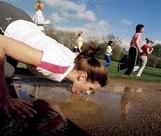
--provided by Dina Griffin, Sport Dietitian for Fuel4mance--
General Hydration During Workouts: Last week I briefly described the importance of giving attention to pre-workout hydration status. If you start a training session inadequately hydrated, you will not be able to “play catch up” during the workout. First remember each one of you has different hydration needs and factors such as duration and intensity of workout, environmental conditions, and individual sweat rate influence your needs. A general guideline for consuming fluids during a workout is 3-8 ounces every 15-20 minutes. The goal of hydration during a workout is to prevent excessive dehydration (often measured as greater than a 2% body weight loss from beginning to end of training) and excessive changes in electrolyte balance. Whether you drink water, a sports beverage, or an electrolyte-only beverage, will depend on your goals, needs, and tolerance. Did you know gulps of fluid are better than small sips for minimizing dehydration risk? Do you know what sports drinks are provided on race day so that you can test whether this product works for you in advance? Do you know how many ounces of fluid you consume during a long run? These are just a few of the many questions I address to determine specific hydration needs to keep you training and performing your best. You won’t always need what the packaged product and general guidelines suggest, so now is the time to start learning and testing what works best for you (...and you might be surprised what you find out!). Contact me at [email protected] for more info on fluid needs and nutrition training to meet your goals! |
mix1 Nutrition Tip - Week 7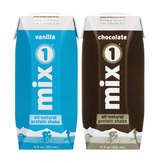
--provided by Dina Griffin, Sport Dietitian for Fuel4mance--
Recovery needs Many athletes think of recovery nutrition as starting once a workout has ended. Not entirely true, BoldRunners! Your recovery will actually be quicker and easier if you are properly fueled and hydrated when you BEGIN your workout. However, what you do with your nutrition and hydration after the workout certainly plays an important role on how quickly your body adapts to the training stressors and replenishes your energy stores. The sweet spot for optimal recovery nutrition is within 30 minutes after the workout. This is when your body is most receptive to rehydration and nutrition due to enzyme activation and hormone levels. All of us have different recovery needs, but factors such as the duration and intensity of the run will influence what is needed. Generally, a food and/or beverage that includes a quickly digestible carbohydrate source, a small to moderate amount of protein (10-25 grams), sodium, and fluids are appropriate to get the recovery ball rolling. Some examples include yogurt with fruit, turkey or peanut butter & jelly sandwich, chocolate milk, fruit smoothies, or bottled protein shakes such as Mix1. If you desire weight loss, consider timing your workout to end around a usual meal or snack time to avoid consuming excess calories. mix 1 Chocolate & Vanilla 4packs can now be found at King Soopers. Go try it out today. It's delicious and a great recovery aid. As with most aspects of your training and nutrition, planning and implementing are keys to success. Think ahead and pack your recovery fuel(s) with you so that you catch the sweet spot for optimal recovery! Contact [email protected] if you have questions or concerns about your specific recovery needs. See you out there on the trails. |
mix1 Nutrition Tip - Week 5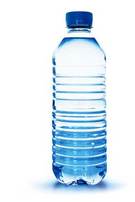
--provided by Dina Griffin, Sport Dietitian for Fuel4mance--
General pre-workout hydration tip: Hydration guidelines can vary significantly for runners. Factors that influence your hydration needs include your body mass, running speed, heat acclimation, gender, sweat rate, and weather conditions. Some of us are lucky enough to get in our workouts early in the morning before the temperature increases to its peak for the day while others are not so fortunate. Regardless of the time you begin your workout, your goal should be to start as hydrated as possible so that you cannot blame a poor workout on dehydration. For the BoldRunners doing early morning workouts, make sure to hydrate well the afternoon and evening before. Drink fluids as soon as you can in the morning and consider wearing a fuel belt or carrying a hand bottle during your run if you didn’t have time to take in much fluid beforehand. For the BoldRunners doing evening workouts, you have all day to hydrate but make sure you keep tabs on your hydration especially in the afternoon. Keep a bottle of water at your desk or take one along so that you can’t forget. Pay attention to urine frequency (every 2-3 hours is ideal) and urine color (pale-colored is typically a good indicator of hydration adequacy) to help you determine your needs. Don’t forget that there are a variety of fluids that “count” towards your intake besides plain water: milk, juice, tea, coffee, mineral or seltzer water, and even the water in fruits and vegetables! For more specific assistance on your own unique hydration needs, contact Dina at [email protected]. |
mix1 Nutrition Tip - Week 4
--provided by Dina Griffin, Sport Dietitian for Fuel4mance--
When it comes to traditional sport nutrition guidelines, most are numbers-oriented. There are calories, percentages, grams, ounces, servings, etc. I recommend first focusing on your daily nutrition and to think of it in terms of its quality rather than these quantities. No matter if you follow a vegan, gluten-free or omnivorous diet, there are still easy ways to mess it up to where it interferes with your overall health, and your running performance and recovery. Because most of us eat anywhere from 3-6 times per day, each meal is an opportunity to put together quality foods. What does a “quality combination” of foods look like for runners? Generally:
When we put an emphasis on nutrition quality, runners benefit in many ways. One major benefit is body composition change(s). The quality of our meals and snacks can support or hinder stable blood sugar levels. When we have stable blood sugar levels, we experience fewer spikes and crashes in energy levels. There is less of a tendency to overeat, which means you use the energy you consume rather than it being stored as fat. You guessed it... over time, this results in changes in body composition! The challenge is taking time to examine your own nutrition and to learn how to optimize the quality of your nutrition. If you begin to think about your meal composition in the order of the foods listed above (lean protein first, followed by healthy fats and vegetables, etc), then you have begun to build your quality meal. So, take a break from being overwhelmed by all those nutrition numbers and focus first on quality. With consistency and optimization, you will see and feel the difference in your health and in your running performance. Feel free to e-mail me questions I can address in future weekly tips at [email protected]. Brought to you by mix1 all natural protein shakes – pre-workout fuel & post-workout recovery http://www.mix1life.com/ |

